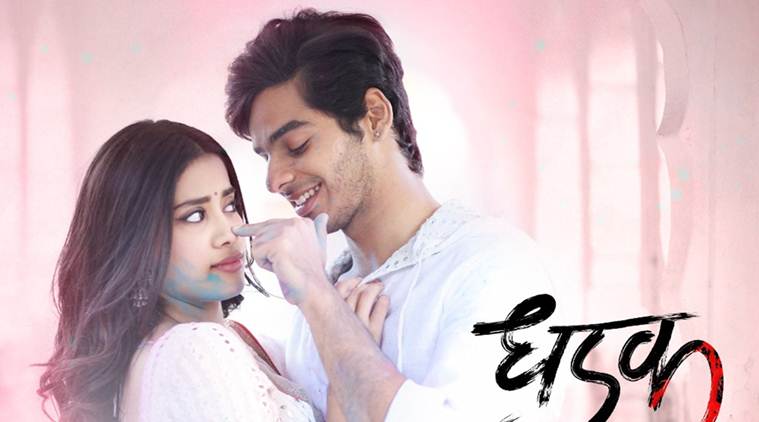
Dhadak movie cast: Ishaan Khatter, Janhvi Kapoor, Ashutosh Rana, Kharaj Mukherjee, Aditya Kumar
Dhadak movie director: Shashank Khaitan
Dhadak movie rating: One and a half stars
Dhadak movie director: Shashank Khaitan
Dhadak movie rating: One and a half stars
Remaking Sairat for mainstream Bollywood was always going to be a tough ask. The edges of that searing 2016 tale of love-in-the-time-of-caste were necessarily going to have to be blunted and softened, because too much ‘realism’ is hard for us to handle.
There isn’t a filmmaker working in India who can match Sairat director Nagraj Manjule’s appetite for recreating raw slap-in-the-face directness for the screen: the only one who can match him is Sanal Sashidharan, and neither of them work, for obvious reasons, in Bollywood, where dirt needs to be proffered up in pretty ribbons.
What I was expecting from this Karan Johar production, I got– a polish-up-the-muck aesthetic to make it palatable for mainstream audiences. What I didn’t get, was feeling.
That sense of playfulness which director Shashank Khaitan, going by his previous films (Humpty Sharma Ki Dulhaniya and Badrinath Ki Dulhaniya) exhibited in his earlier work, a quality which made his young leads spark, is missing from Dhadak. So is Johar’s uncanny ability to ratchet up emotions, to create frisson between two lovers, those moments full of awareness of the other, without which no love story can be effective.
Barring a few patches, Dhadak has neither requisite drama nor authenticity. It underlines all its scenes with blaring background music, to tell us how to feel. It doesn’t work, not as an official copy of Sairat, nor as a standalone Bollywood romance. There is, I’m afraid, no ‘dhak dhak’ in this Dhadak.
Caste is such a hot button issue that it burns. Or, should we say, it rightfully should, when used in a film as a central theme. Here it is bandied about a couple of times as a phrase, without any real attempt to delve into the complexities and miseries of what it means to be of lower caste in today’s India.
Great love stories, and god knows we need them more than ever, especially ones which dare to put the spotlight on age-old inequalities and deep-seated prejudices of caste and class and religion, shift something. The best ones go after barriers, subvert hidebound notions of honour, give us a new way of coming at that oldest story in the world: love, or something like it.
More than anything else, they give us passion, incendiary passion, that burns the screen. There is so little going on between Madhukar (Khatter) and Parthavi (Kapoor) — yes, there’s some amount of flirty ‘nonk-jhonk’; but not enough of the giddiness and the swirliness of true young love: neither Khattar, whom we’ve seen before, and Janhvi Kapoor, the late Sridevi’s daughter whose debut this is – come across as if they will live and die for their love.
Sairat was set in rural Maharashtra, and takes its young leads to a slummy outpost in Hyderabad. Parshu and Archi learn the hard way that you can run, but not hide, and lead us to one of the most wrenching climaxes in the movies. Dhadak gives us Udaipur and Kolkata and glossed-up grunge, and provides Madhukar and his ‘oonchi-jaat’ love Parthavi some tough times via her snarly father (Rana), which they ride over so easily that the end is not earned enough.
Finally, you look around to see the people who belong to this tale—Aditya Kumar as Roop, Parthavi’s menacing brother, and Kharaj Mukherjee, the Santa Claus figure in Kolkata—stand out.
Khatter has a mobile, expressive face. He is a natural. Kapoor, though, has a hard time emoting. On their own, they each have a couple of scenes which they work: together, there is no zing, no `zingaaat’. There will be a modern contemporary Bollywood romance posting new frontiers on the caste-and-class front. Dhadak is not it.
Comments
Post a Comment